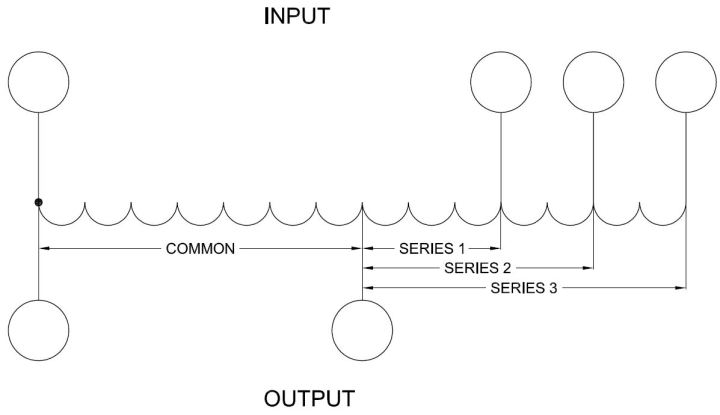Dr. Transformer: Today’s lecture on step down auto transformers is short and sweet: what most transformer designers do not know can hurt you, the specifier or buyer and have a negative effect on your application. There is an issue with step down auto-transformers that is neither readily obvious nor generally known to most transformer designers. Stated succinctly it is that unless the ‘series’ winding is in a ‘closely coupled’ (low leakage reactance) configuration with the ‘common’ winding, the output voltage may be excessively distorted. We say this because we have had direct experience with the distortion in a ‘loosely coupled’ wound unit that was corrected by changing the configuration to ‘closely coupled’.
The way this can be visualized is as having a high inductance reactor in series with the primary winding. High distortion in output current (but also exciting current) will cause a voltage distortion across the input reactor and thus the primary of the transformer. It can also cause loss of secondary voltage under load. When the configuration is changed to ‘closely coupled’ the reactor goes away and so does the distortion (and potential voltage loss).
The way this can be visualized is as having a high inductance reactor in series with the primary winding. High distortion in output current (but also exciting current) will cause a voltage distortion across the input reactor and thus the primary of the transformer. It can also cause loss of secondary voltage under load. When the configuration is changed to ‘closely coupled’ the reactor goes away and so does the distortion (and potential voltage loss).
Step Down Auto Transformer
For the designer, this creates a challenge for multiple inputs because each series configurations (series 1, 2, 3 in the drawing) must be closely coupled with the common. In addition to being a design challenge, this criteria also tends to increase manufacturing cost (for some units substantially), but it is well worth the investment to remove the distortion.
Thus, for the person buying or specifying step down auto transformers, there are cheaper ways to build them, but the apparent savings may come at a steep price in system performance, reliability and durability.
Next post, we will discuss ‘closely coupled versus loosely coupled’ as I referred to above. Until next time, stay cool and efficient!
Thus, for the person buying or specifying step down auto transformers, there are cheaper ways to build them, but the apparent savings may come at a steep price in system performance, reliability and durability.
Next post, we will discuss ‘closely coupled versus loosely coupled’ as I referred to above. Until next time, stay cool and efficient!



